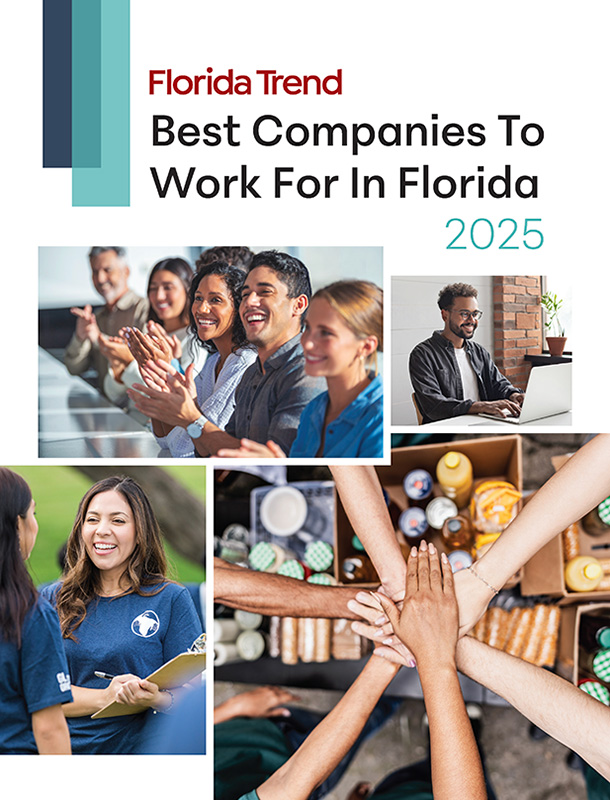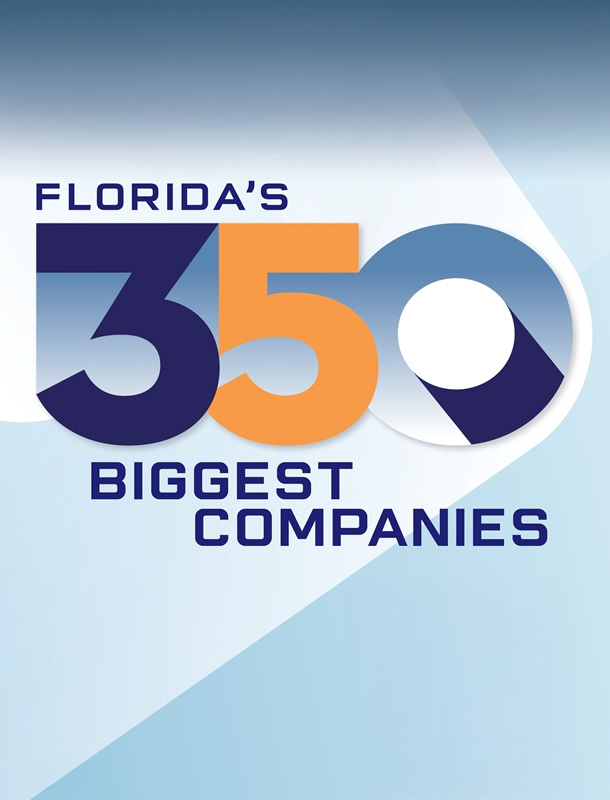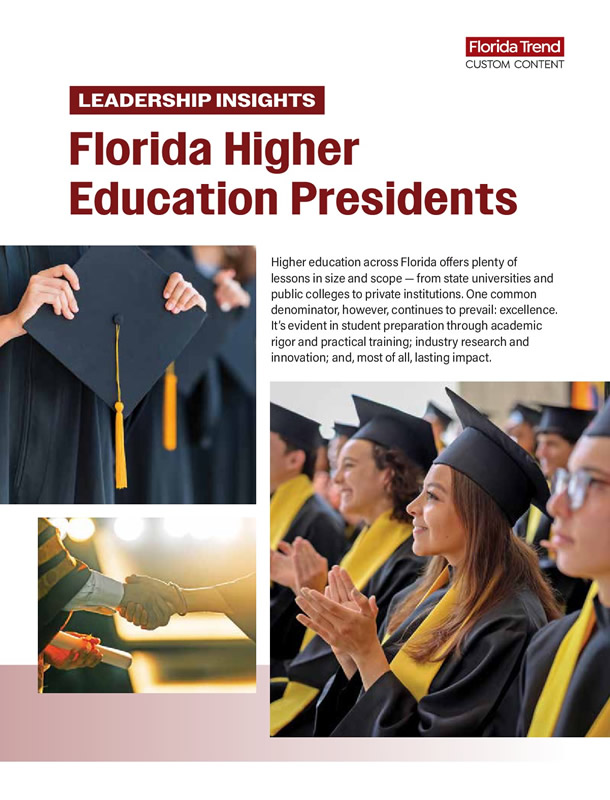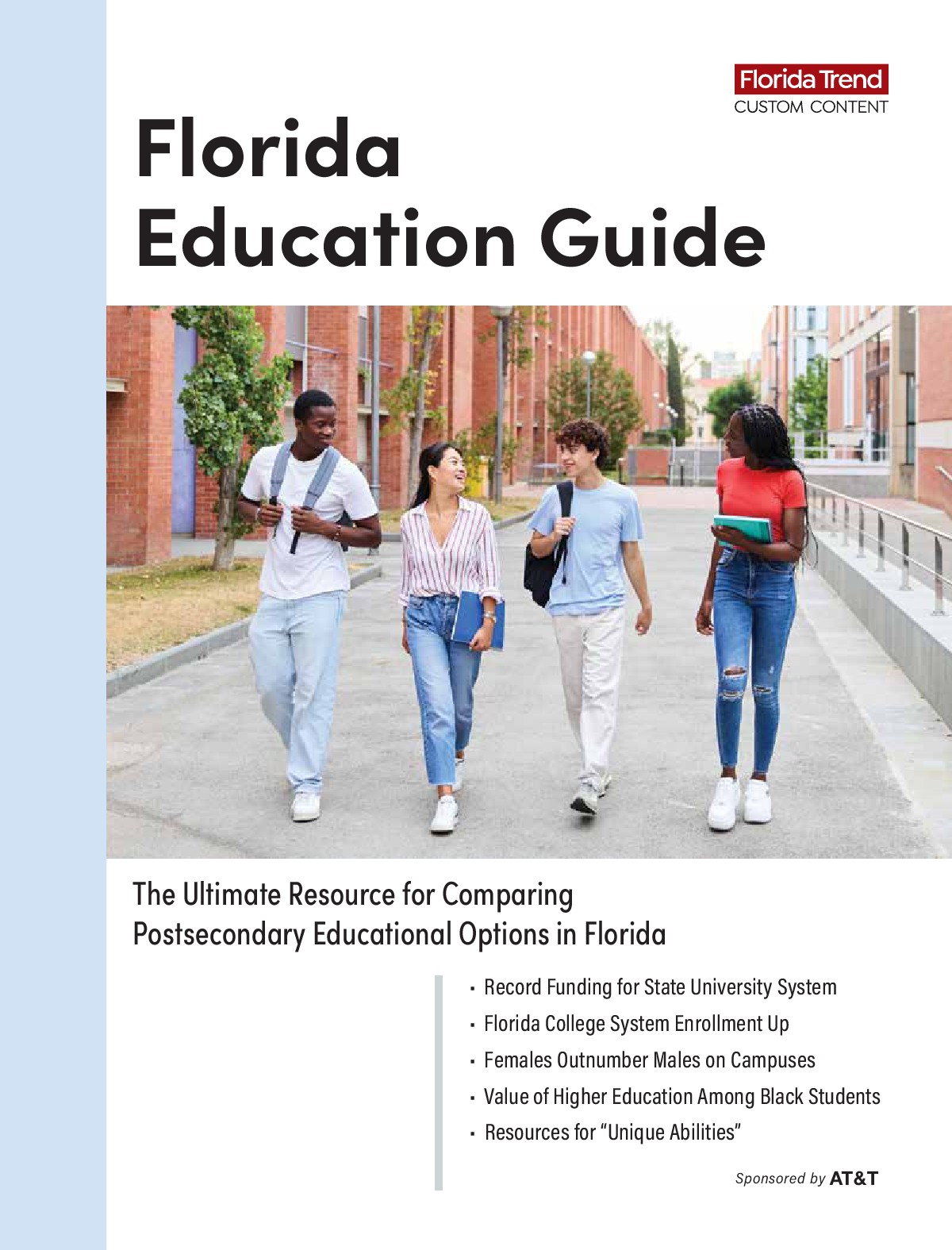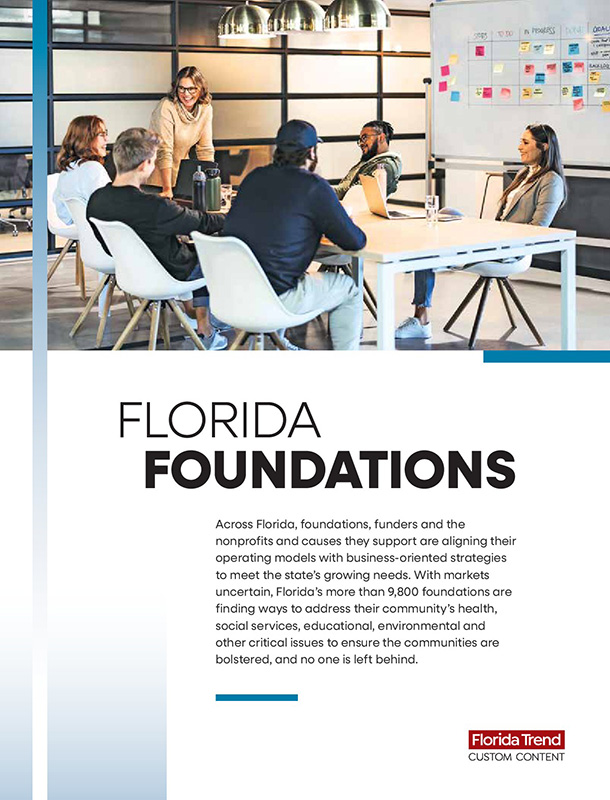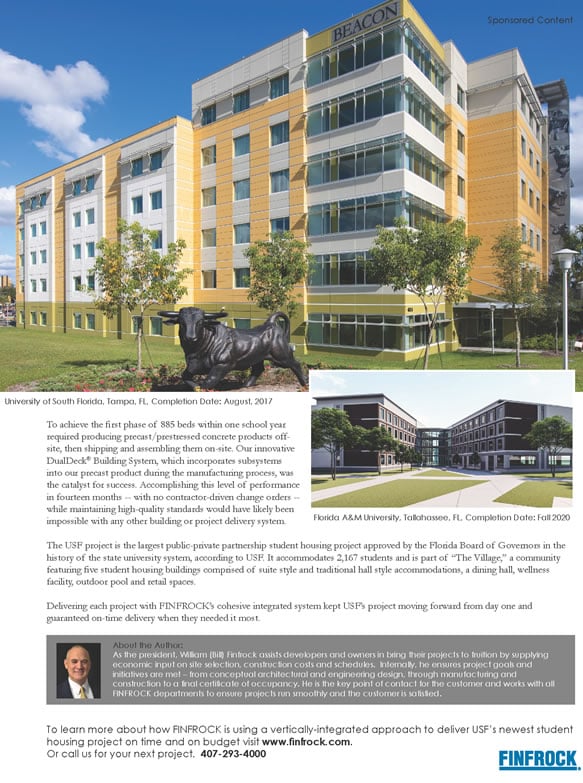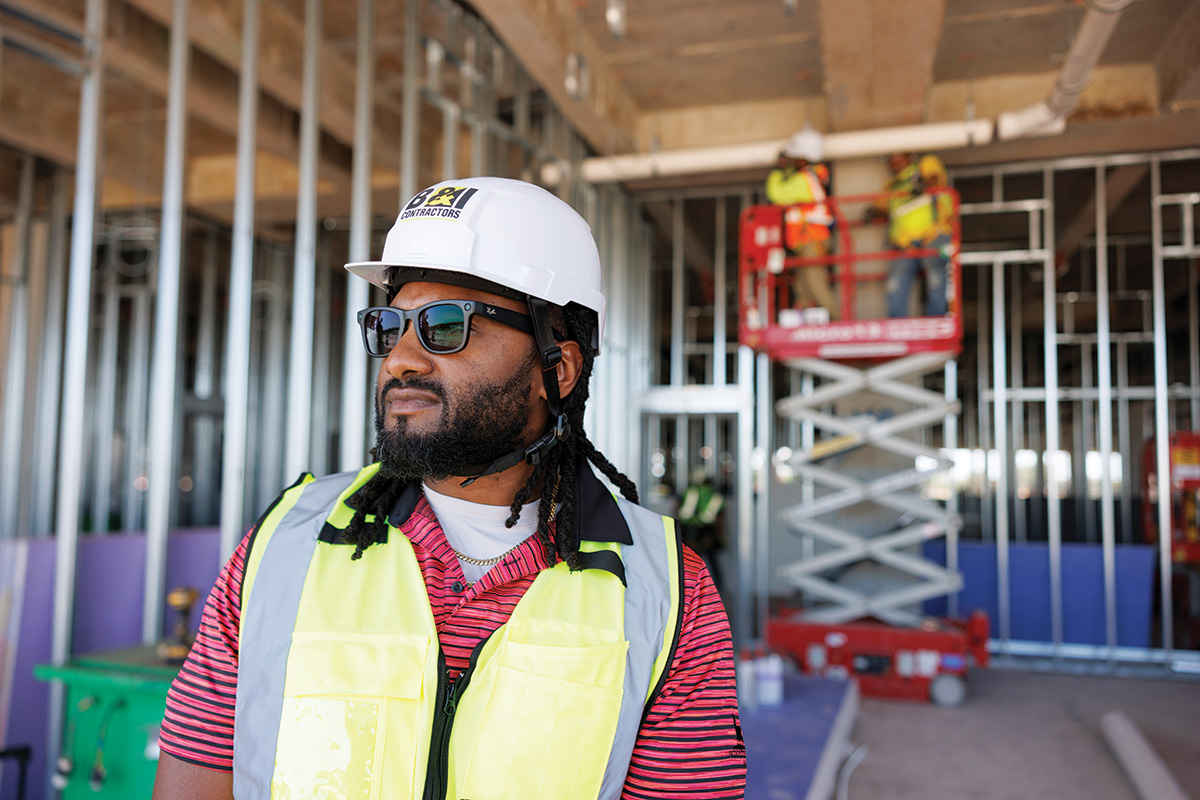He had spent a couple of years working for a home plumber, so Ben Brignol thought he was ready for a job with a major commercial contractor. It didn’t take long to realize how much he didn’t know.
“I had no experience in commercial construction,” says Brignol, 40, now a plumbing manufacturing manager at Fort Myers-based B&I Contractors. “The company I worked for was doing little small houses. Building houses versus building a $5-million building is night and day. Everything that you learned from house construction, you can forget all about it. I kind of walked in here not knowing anything about commercial construction.”
But B&I — which specializes in metal ductwork, piping, plumbing and electrical prefabrication — gave him the time and resources to learn. He spent weeks digging ditches before becoming a helper on job sites, then a lead, then a plumber and a superintendent before he made manager. Along the way, the employee-owned B&I sent him to the nearby Tri-County Apprenticeship Academy for instruction and training.
Sixteen years later, Brignol leads a team of 10 mostly young workers who came, like he did, not knowing much about commercial construction. He’s working to guide them down a similar path to success.
In B&I management, says CEO Jason Grabowski, you can’t be promoted unless you’ve mentored somebody underneath you.
“We do so much in-house training because you have to,” he says. Maybe 20% of new hires are ready for the job on Day 1. The rest “we’re training, starting with just somebody who wants to learn — teach them how to use a tape measure, how to use a drill. After three or four years, they’re welders or journeyman plumbers or journeyman electricians through the certified apprenticeship training program” like Brignol.
Florida’s colleges and universities have aggressively beefed up their workforce education and certification programs, but the state’s growth and demographics continue to outpace business and industry needs in several sectors. The state created 142,000 new jobs from July 2024 to June 2025, the Florida Chamber of Commerce reports, with 1.4% GDP growth in Q1, bucking the U.S. and most other states, which saw weakened hiring.
While most of the state has about the same number of job openings as it has people seeking work, many of those people lack the requisite skills. And in places like Southwest Florida the workforce has contracted, says Lee County Economic Development Director John Talmage.
Lee County had about 16,000 job openings last summer and may need 200,000 more workers in the next few years to fill new jobs or replace retirees leaving the workforce. “We have a significant number of workers getting ready to retire or step out of the workforce,” Talmage says, adding that 25% of Lee County nurses are aged 55 or older.
From the Panhandle to South Florida, registered nurses remain in greatest demand, the Chamber found after analyzing online job postings. But sales and customer service people, skilled trades, truck drivers and mechanics also are in high demand.
BRIDGE BUILDING
The answer for many is to follow B&I’s approach and build from within. It’s a vital aspect in economic development, says Rodrick Miller, CEO of the Miami-Dade Beacon Council. He’s shepherding a project that can help employers connect with outlets to teach the skills their workers need.
“Industry has a very clear picture of where their gaps are and what they need,” Miller says. “What they often don’t know, because it’s not their business, is how to upskill, how to provide that training.”
The Beacon Council’s Talent Bridge program is in development. With help from a $1-million legislative appropriation from the state, it aims to host an online portal early next year to connect industry to local colleges and universities offering certification and other training programs. Most online portals target job seekers, Miller says, pointing them to vacancies. Talent Bridge aims to show industry where to send its people to learn what they need to grow.
If the Beacon Council’s Talent Bridge program succeeds, nearly two-thirds of Miami- Dade residents will have at least a two-year credential by 2040.
“Our goal is simple,” Miller says. “It should be easier for companies to have a pipeline to meet their needs. It should be easier for people to figure out what the opportunities are that are out there and how to plug into those things.”
Fewer than half of Miami-Dade residents have at least a two-year credential, Miller says. If Talent Bridge works, that figure should be closer to two-thirds by 2040. He already has assembled an Academic Leaders Council, with presidents from Miami Dade College as well as Barry, St. Thomas and Florida International universities and the University of Miami.
The state funding stems in part from a desire to replicate the program throughout Florida.
Economic development has changed over the last decade, Miller says. It used to be that tax incentives and real estate assets dictated where companies might choose to locate. Now labor is at the top of the list.
“Our companies are doing really, really well,” he says. “While we’ve got high level growth, we’ve got companies saying, ‘We want to grow more ... but we just can’t find enough people or people with the right skill sets.’”
A similar principle aims to train people in Southwest Florida looking for work with the skills employers need. A 2023 U.S. Department of Commerce grant is helping the Future-makers Coalition and Florida Gulf Coast University connect people who might not be in the workforce with micro-certifications in health care, manufacturing, education and logistics.
CHRONIC CONDITIONS
No sector has seen a more concerted effort to build a workforce than health care. Virtually every state college and university has beefed up programs to get as many nurses into the field as possible to cut into a deficit once predicted to be near 60,000 positions in a decade.
Florida’s state universities have received $138 million since 2022 to expand nursing programs. More than 1,900 students graduated with nursing degrees last year.
That combined effort has paid off. The nurse turnover rate has slowed significantly, and vacancies are down 62% over the last two years, says Florida Hospital Association president and CEO Mary Mayhew.
“Hospitals,” she says, “have moved mountains to create those local partnerships with the community colleges and their schools of nursing, to look at ways to support that pipeline. They’ve built programs such as ‘earn while you learn’ to create career ladders for their staff. They’re providing tuition reimbursements, they’re providing scholarships. They’re looking at the workplace environment — what helps to improve the culture of the workplace, creating a team-based environment.”
Even with that influx of new talent, some health care systems felt a need to go further. Baptist Hospital of Northeast Florida launched its own clinical school in 2023, with a 15-week nurse assistant training program licensed by the state.
Baptist Health had “a few hundred openings” just a few years ago, says executive vice president and chief human resources officer Kate McCann. Today it’s fewer than 100.
Baptist Health South Florida has seen similar success, says senior vice president and chief people officer Adriene McCoy. It offers scholarships for would-be nurses, some carrying a multiyear employment commitment as a condition.
Upskilling doesn’t just fill talent gaps — it also pays long-term dividends in terms of employee loyalty and retention.
It’s also working with the Beacon Council to identify ways to help allied health and support staff upskill and expand their opportunities.
“We understand that at this point it is impossible to staff our organization clinically with only experienced talent,” McCoy says. “You have to invest in your current workforce. You have to invest in community and helping build a bridge for individuals to come in to make it more seamless.”
Employees chosen for upskilling opportunities receive their regular salaries even if half their time is spent in training. Without it, people might have to pass on the opportunity, McCoy says. “It was worth the investment at the end to have someone who is loyal to the organization, who is appreciative of the fact that they got their training here.”
It’s not all about money. McCoy recently was in one of Baptist Health’s hospitals with a loved one when she heard an attendant wheeling the patient down a hallway. The attendant passed a colleague to excitedly share, “I got in the upskilling program” and saw the two celebrate.
The attendant didn’t know who McCoy was or that she helps make such opportunities happen. As she watched the brief interaction, “My heart just started to jump,” she says. “It was so random. But to see the joy of an existing employee who is improving the economics of their career in a place that they feel very comfortable with the investment of the organization was very, very meaningful.”
HIRING MOMENTUM
The trucking industry also finds itself constantly trying to keep pace, says Alix Miller, president and CEO of the Florida Trucking Association.
“We think we’re needing about 15,000 to 20,000 truck drivers right now,” she says. With 800-1,000 people moving to Florida each day, “they need stuff. Or they need to build a house. Our trucks provide all the building materials, all the appliances.”
Drivers, meanwhile, are only about a third of the trucking industry workforce. Everything from mechanics to supply chain and logistics managers to engineers, software developers, lawyers and accountants also are in demand. The association is working with FIU’s master’s program in logistics and supply chain management, which steers a lot of people to Florida’s ports and rail lines, to inform students about opportunities in trucking.
“While we’re always focusing on diesel technicians and truck drivers — and rightly so — this campaign is about looking at the trucking industry in a broader sense,” Miller says.
Some sectors are having it easier than others.
Miami-based cybersecurity/IT company Kaseya — which moved its headquarters from Silicon Valley in 2018 — is in the midst of a sizeable expansion effort, hiring 600 people in the past two years.
“We’re finding the talent here locally,” says spokesman Xavier Gonzalez. “We haven’t had that much of a challenge.” He credits FIU, UM and Miami-Dade County for developing that talent pool and the Beacon Council for bringing the talent and employers together.
In Tampa, Israeli drone manufacturer XTEND had to hire administrative staff, sales and business development people for its new U.S. headquarters that opened in July. “Either we’ve been extremely lucky or there’s a great pool of workers here who are looking for those types of jobs,” says Roy Levy, vice president and general manager of XTEND’s U.S. market.
Drone assembly is easier than it might sound, Levy says, comparing it to building with Legos. The software comes from Israel, and the parts come from other U.S.- based manufacturers. This summer’s “Big Beautiful Bill” included more than $1 billion for expanding U.S. small drone manufacturing, and Levy is confident that XTEND can grow to 150 employees with the resulting business.
Levy may be finding the workers he needs, but skilled trades are more challenging, says B&I CEO Grabowski. Younger workers are less interested in working with their hands in the Florida heat, he says. He’s trying to get the message out that trades often offer a faster track to good-paying careers.
“Our skilled trade guys and girls are making more money than nurses,” Grabowski says. “Everybody says, ‘Oh, you can be a nurse in two years.’ I’m like, ‘Yeah, you can also be a welder.’”



